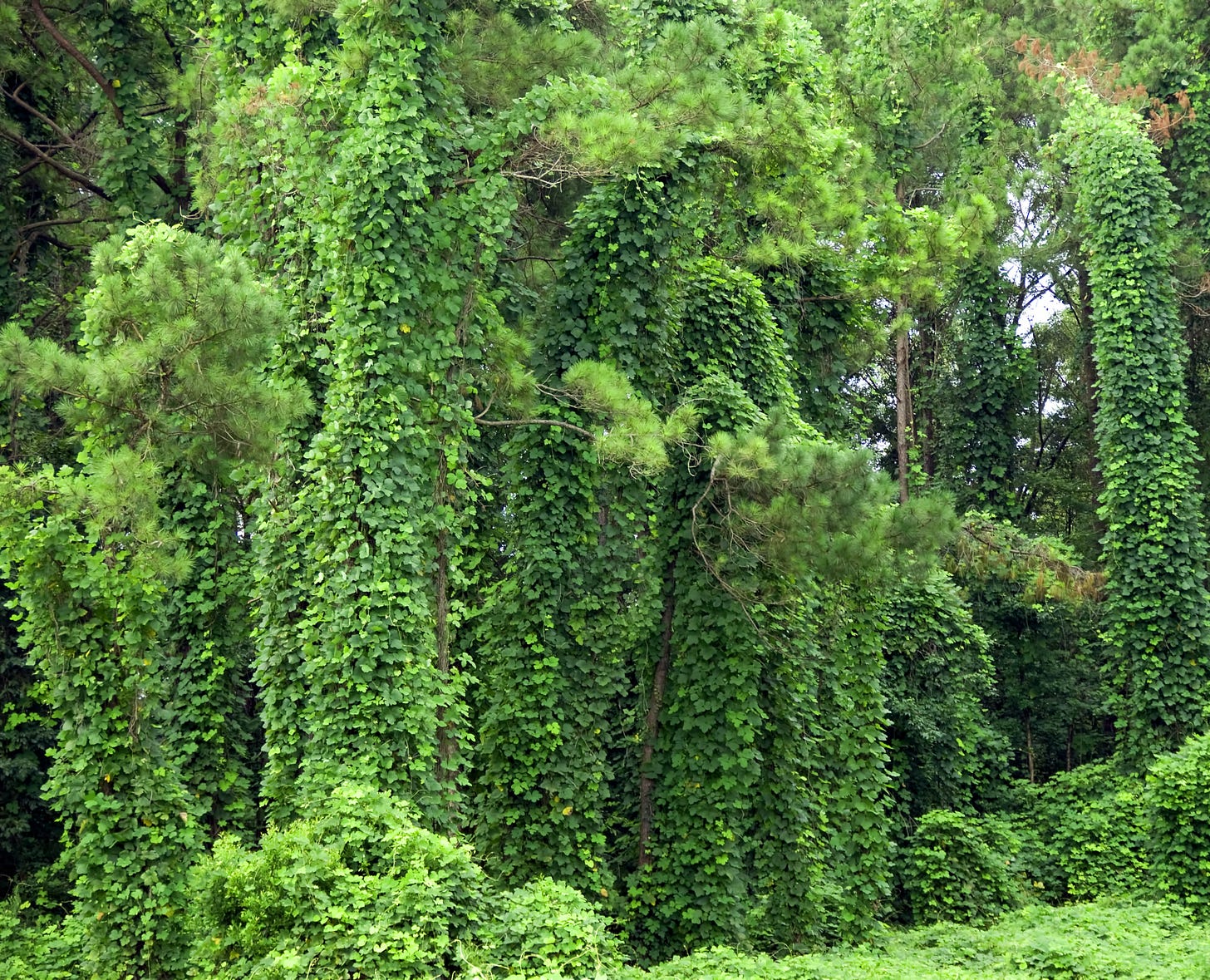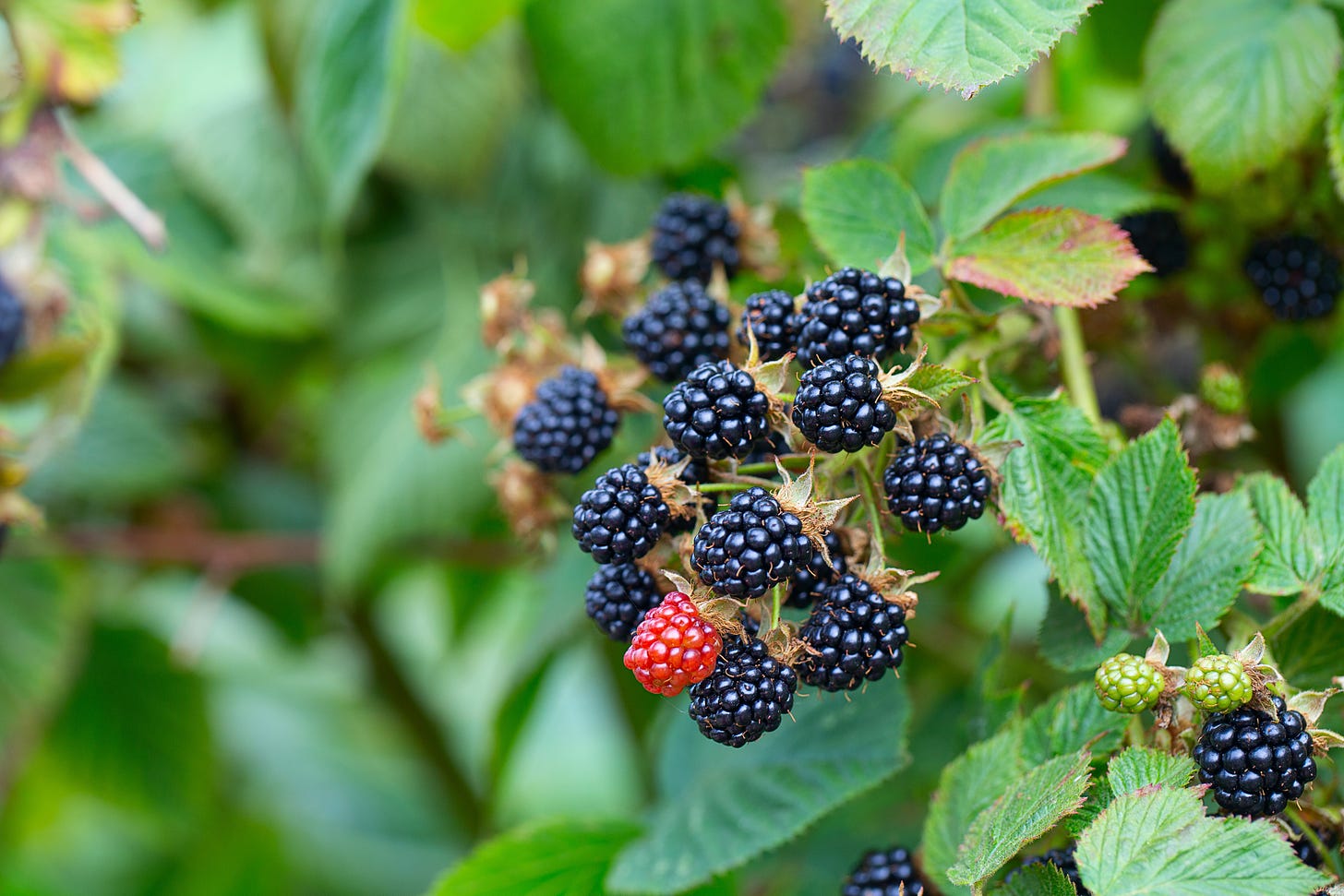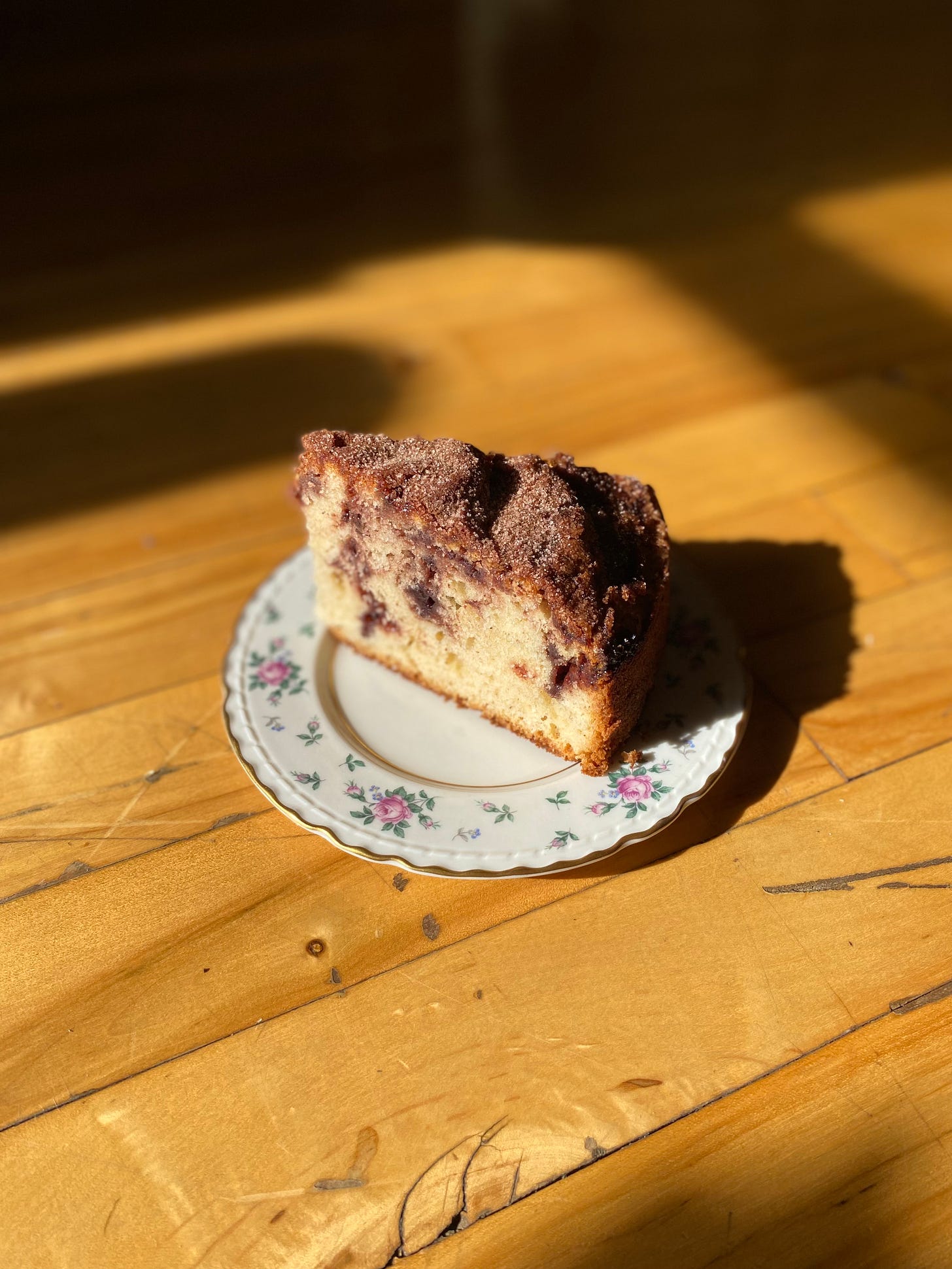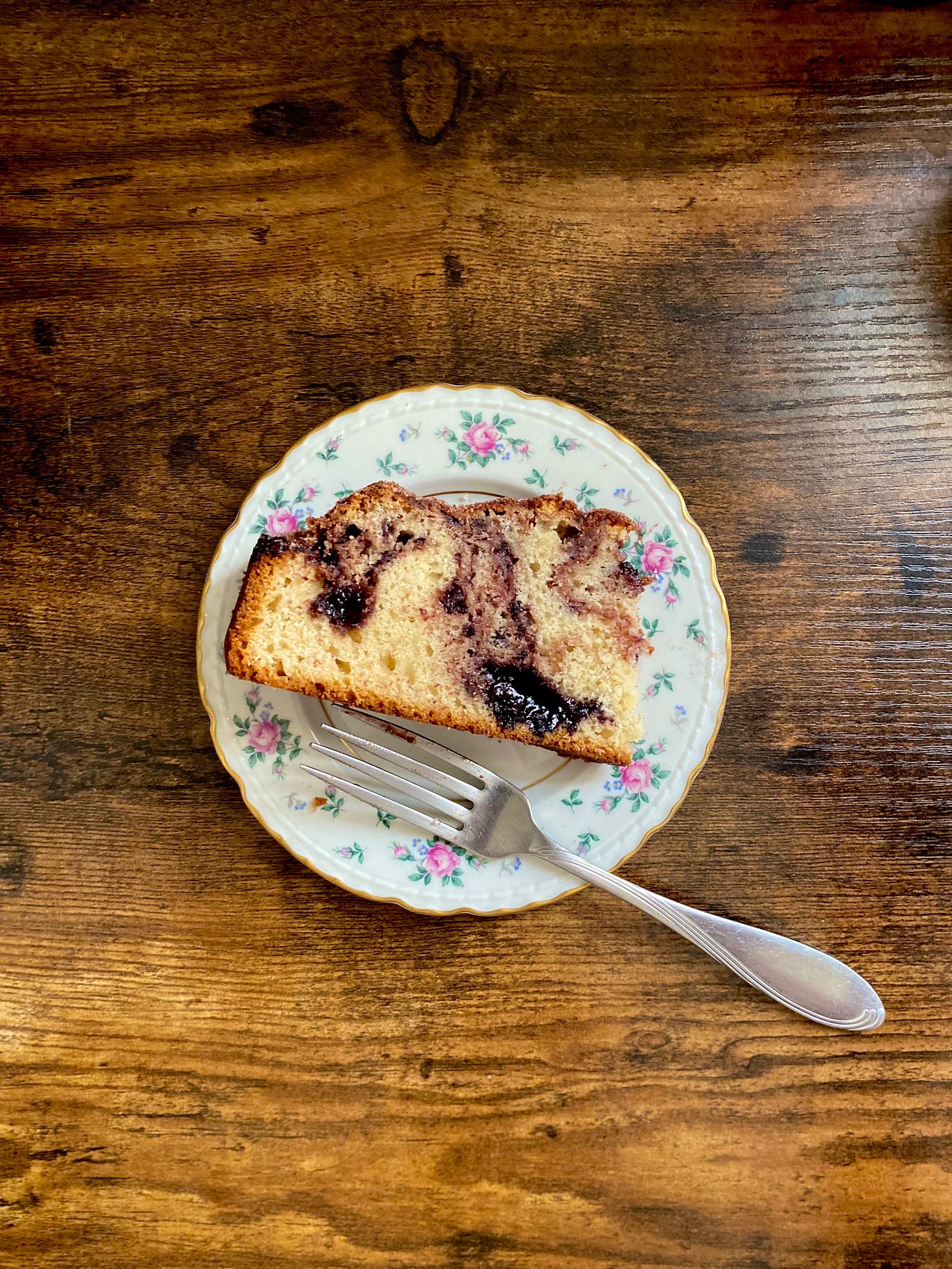Cake the invaders
These edible invasive plants belong in cake
It’s cake month! Last week, we talked confetti cake for the climate era.
At the annual Invasive Species Cook-Off in Corvallis, Oregon, familiar dishes are served with unusual twists. A quiche is made with Canada thistles, thorns removed. A crab dip is reimagined as a red swamp crayfish dip, made with critters that escaped from science classrooms and promptly set up clawed kingdoms at the bottom of Oregon waterways. The competition, happening this Saturday, is how the Institute for Applied Ecology brings people to the table to learn about invasive species, which are among the biggest modern threats to biodiversity. And as always, I’m over here wondering: What’s for dessert? Specifically, which invaders could we cake?

People tend to focus on invasive dinners. Entrées starring feral hogs and tiger shrimp have appeared in restaurants from Austin to London. The “invasivore” movement’s antihero du jour is the lionfish, which looks like an underwater clown piñata and makes a mild ceviche.
The idea of invasivorism—that we can eat our way out of a big environmental problem—is appealing in part because it’s so simple, but the reality is more complicated than it appears. Whether eating invasives can actually eliminate a population depends on how widespread and well-established it is, a 2014 review found. And plants are more challenging to manage with our mouths than fish or mammals, because picking fruits and greens can leave behind parts of the plant that are able to regenerate on their own.

But what eating the invaders definitely can do, at a minimum—besides get you a free meal—is start a conversation. Joe Roman, a conservation biologist credited with coining the term “invasivore,” told Scientific American that it’s “a way to get [invasives] on people’s radars.”
After an amuse-bouche, the implication goes, maybe people develop an appetite to support conservation groups or even clear out brambles in their own backyards.
And cake—being the patient, heaven-sent dessert that it is—is a willing canvas for entire categories of invasives: flowers can be flouncy décor, and fruits can be an easy jam filling. Plus, served warm, invasive cake could do more than raise awareness.
Here’s how it could unfold: You hand out slices of coffee cake streaked with Himalayan blackberry jam to your friends, along with a cup of strong coffee (the caffeine is important). You expound eloquently on the brambles clogging Discovery Park in Seattle.
You tell your now sugar-zapped, caffeinated friends, who are nodding emphatically to your well-paced speech, that you have an idea, as well as four pairs of leather gloves.
You bike together back to Discovery Park, pull those roots right out of the ground, replant native blackberry varieties, and keep the fruity spoils for yourself.
Cake these invasive fruits
If you’re in the Southeast: Kudzu flowers are blooming now and make a fuschia jelly or pretty cake décor. Follow these guidelines for picking and removal.
If you’re in the Eastern US and upper midwest: Autumn olives pop out in September and make a red currant-like jam, and probably a striking crimson syrup, too. Follow these guidelines for picking and removal.
If you’re on the Pacific coast: Himalayan blackberries are ripe now and make an easy jam. Follow these guidelines for removing Himalayan blackberries.
If you’re in the Eastern US and parts of the west: Come springtime, Japanese knotweed ripens into rhubarb-like stalks that make a tangy jam. Following these guidelines for picking and removal.
Note: As with any foraging, be sure you know what plant you’re looking at, and don’t pick near roadways or in areas sprayed with chemicals. I simply cannot afford to be sued!
Recipe: Invasivore jammy coffee cake
Lightly adapted from Bake from Scratch’s delish sugared jam cake recipe. The sugar has been reduced a tad, the topping altered, and the method simplified so you swirl the jam through the batter for an easy-to-prep treat adjacent to coffee cake.
Cake
2½ cups (313 grams) all-purpose flour
1 cup (200 grams) granulated sugar
1½ teaspoons (7.5 grams) baking powder
1 teaspoon (3 grams) kosher salt
1 teaspoon (2 grams) grated fresh nutmeg
¾ cup whole milk
½ cup plus 2 tablespoons (141 grams) unsalted butter, melted
2 large eggs
1 teaspoon vanilla
¾ cup quick blackberry jam, like this recipe (or another jam)
Topping
2 tablespoons (30g) granulated sugar
½ teaspoon (1 gram) ground cinnamon
½ teaspoon (1.5 grams) kosher salt
Preheat the oven to 350F. Spray an 8-inch round cake pan with baking spray, and line the pan with parchment paper. Spray again for good measure.
For the topping: In a small bowl, mix the topping ingredients together.
For the cake: In a large bowl, whisk together the flour, sugar, salt, nutmeg, and baking powder. In another large bowl, whisk together the melted butter, milk, vanilla, and eggs. Add the liquid ingredients to the dry ingredients, stirring just until combined (overmixing makes a tough cake). Pour the batter into the cake pan. Plop the jam atop the cake batter one spoonful at a time, distributing it across the surface. Then swirl it through the top ⅔ of the batter with a fork, until you’ve gone past tie-dye and are approaching an even light purple. Sprinkle the batter evenly with the topping.
Bake until a toothpick inserted in the center of the cake comes out clean, 50-60 minutes. Let cool in pan for 10 minutes. Then serve to friends, and suggest biking back to your picking spot with gloves, shears, and a vengeance.





I subscribe to a truly unhealthy number of newsletters in this app lol & your posts are consistently among the best and most interesting. Planning to share this post with a few friends. I’m grateful for your beautiful mind
So fascinating!